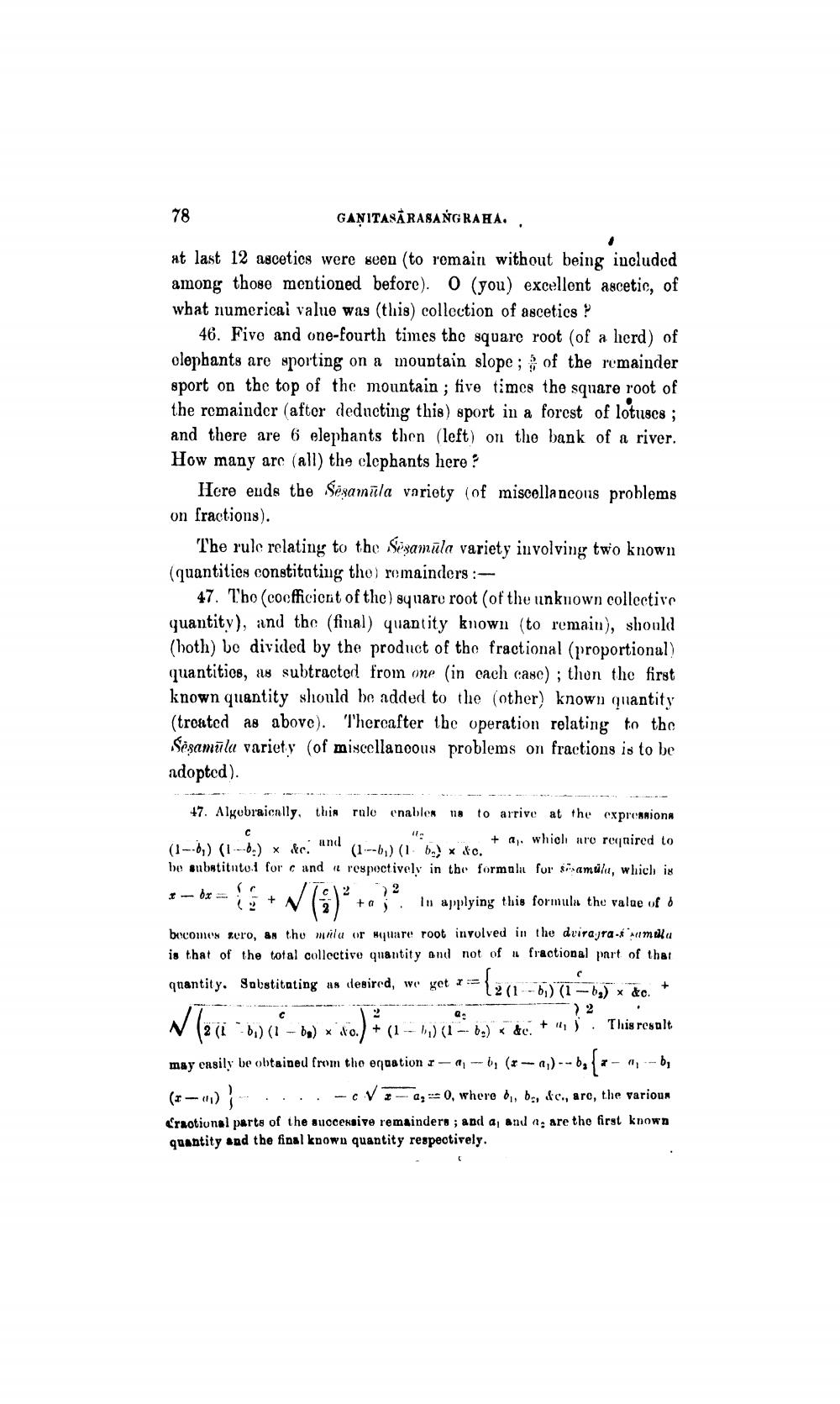________________
GANITASĀRASANGRAHA..
at last 12 ascetics were seen (to remain without being included among those mentioned before) 0 (you) excellent ascetic, of what numerical value was (this) collection of ascetics ?
46. Five and one-fourth times the square root (of a herd) of olephants are sporting on a mountain slope ; of the remainder sport on the top of the mountain ; five times the square root of the remainder (after deducting this) sport in a forest of lotuses ; and there are 6 elephants then (left) on the bank of a river. How many are (all) the clephants here?
Here ends the Sesamīla variety of miscellaneous problems on fractions).
The rule relating to the Sesamūla variety involving two known (quantities constituting tho) remainders :
47. T'ho (cocfficient of the) square root (of the unknown collective quantity), and the (final) quantity known (to remain), should (hoth) be divided by the product of the fractional (proportional) quantities, is subtracted from one (in cach case); then the first known quantity should be added to the (other) known quantity (troated as above). Thereafter the operation relating to the Sésamūla variety (of miscellaneous problems on fractions is to be ndopted).
47. Algebraically, this rule enables 18 to arrive at the exprcasions (1 -- ;) (1 --ba) * &c and (1 - 0) (1 6.) * &c.
+ a which are required to be substitntot for c and respoctively in the formalt for sisamulu, which is fre 17c2"2
+aj. In applying this formula the value of o
becomes zero, an thumla or wyttare root involved in the dvirajra. Amikla is that of the total collective quantity and not of fractional part of that quantity. Solstitating as desired, we get 7 ==
b) (1 -b) x &c. *
2 12 (
1 01) (1 - box do.) + (1 - 1) (1 - 0) < &c. + 1). This result
may onsily be obtained from the equation
-
-
(-
)
-bi
....-CVI - 2, 0, where O, ba, c., are, the various Cractional parts of the successive remainders; and a, and , are the first known quantity and the final known quantity respectively.




